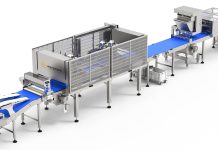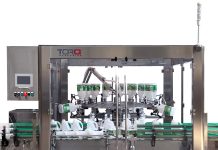Use of Enzymatic Formulations

for the extraction of olive oil
The use of enzymatic formulations during the extraction of olive oil has been investigated for many years as regards the extraction costs. Only recently, the research is mainly focused to the improvement of the nutritional and qualitative characteristics of the product. In this scope, such formulations during the liquid phase proved to be the best ones. In particular, in recent times a number of pectolitic preparations, deriving from not genetically modifi ed organisms, used to increase both the quality and the yield of the product, raised much interest and their use is increasing in many industrial oil mills (in an evident way in the biggest oil producing countries like Spain and Italy). These enzymatic compounds are added to the olive paste at the beginning of the kneading phase and can exert remarkable biochemical effects on the vegetal tissue of olive, so increasing the release of bigger quantities of minor components, with a consequent higher dissolution during the oil phase. Besides, enzymatic treatment proved to be effi cient in improving also the chromatic characteristics of the product, one of the main factors able to infl uence its acceptability by the consumer. This is probably due to a greater extraction of natural colouring agents (chlorophyll, xanthophylls and carotenes). In the end, the extractive yield increases since bigger quantities of oil are released by the vegetal matrix and the coalescence phenomena involving oil drops result accentuated. However, we still have little knowledge of the specifi c roles of the various components present in the enzymatic preparations and the effects vary depending on the cultivar. In this context, the Department of Chemical and Process Engineering “G. B. Bonino” of the Università degli Studi di Genova performed various experimental tests to study the infl uence of different enzymatic formulations on the content in phenolic compound of olive oil extracted from destoned paste of cultivar Coratina. Such formulations are: Maxoliva, Uvazym 1000 Extra ed Uvazym 1000 Couleur. In particular, Maxoliva contains a balanced ratio between pectinasic and carbohydratic activity, Uvazym 1000 Extra is an enzymatic preparation with pectolitic activity in presence of collateral action of cellulosic and emicellulasic nature and, in the end, Uvazym 1000 Couleur is a pectolitic enzyme rich in secondary actions. The formulation have been added to the paste at the beginning of the kneading, carried out in a mixer at 10 rpm for 1 h at 30°C, using different doses and precisely corresponding to 0.5, 1.0 and 1.5% in weight. The separation of the paste in oil most and marc and the oil most in olive oil and vegetation water has been performed by means of a laboratory centrifuge. Besides, the extraction has been made without adding water to the olive paste and a homogeneous sample of 100 g, 50 g added with the enzymatic compound and 50 g not added (check) was used for each test. The process scheme of the system used for the extraction of olive oil is shown in Fig. 1.
Phenolic Components of Olive Oil
The results prove that the addition of all enzymatic formulations to the olive paste causes a signifi cant increase in the phenolic content of oil as to both total polyphenols (Fig. 2) and ortodiphenols (Fig. 3), in comparison with the check samples. However, it is worth highlighting that some phenolic compounds (such as tyrosol and oleuropeine) have irrelevant or no antioxidizing activity, but contribute (together with the volatile components) to the aroma of the product. On the contrary, some others, and especially those belonging to the group of ortodiphenols, act as antioxidating with a positive effect on the shelf life of the product itself.




